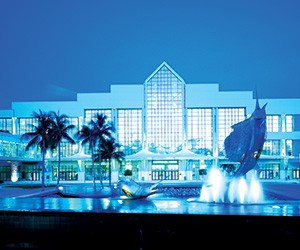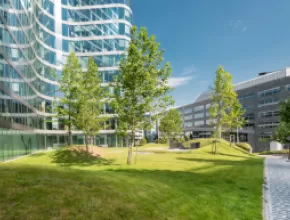In addition to hotels, other venues in Florida have kept an eye on the environment by becoming LEED-certified. A program created by the U.S. Green Building Council, LEED (Leadership in Energy and Environment Design) bestows its designation on individual buildings and homes, and even entire neighborhoods and communities that meet the group’s standards for lower operating costs, waste reduction, energy and water conservation, healthier environments and reduction of greenhouse gas emissions.
In Florida, LEED-certified facilities include the Greater Fort Lauderdale/Broward County Convention Center, which achieved LEED gold certification as an existing building.
“We’re one of only four Gold-certified LEED existing buildings in the country and the first convention center in Florida to be LEED-certified on any level,” says Christine Roberts-Tascione, vice president of convention sales and services for the Greater Fort Lauderdale CVB. “Gold LEED certification is a long-term investment.”
Roberts-Tascione points to some of the convention center’s modifications, which included everything from waste and energy reduction to renovating exterior landscaping and swapping concrete pavement for pavers that allow rain and water to flow into the ground.
“We also guide planners to find what they can do to conserve as far as food and beverage,” she says.
Meanwhile, in downtown Orlando, the new $380 million Amway Center recently became the first NBA facility to earn Gold LEED certification and among its eco-friendly attributes, uses 20 percent less energy and 40 percent less water than similarly sized arenas. In addition, 20 percent of the materials used to build the 875,000-square-foot center came from local sources and 15 percent from recycled materials.
Also designed with LEED specifications in mind, the new Northwest Florida Beaches International Airport modifies its electricity use in order to be more energy efficient, says Parker McClellan, the airport’s deputy executive director. In addition, once the facility was built, the adjacent West Bay Preservation Area moved 41,000 acres of environmentally sensitive land into preservation.





